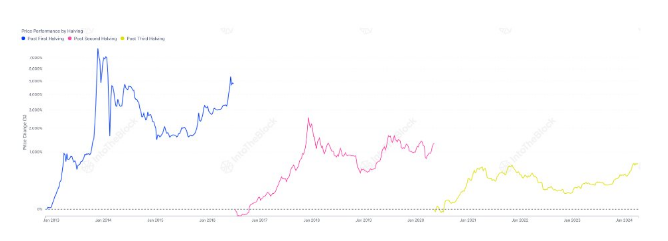There is no denying that the launch of Spot Bitcoin ETFs has boosted the price of Bitcoin and other cryptocurrencies tremendously. This ETF has now unlocked institutional demand in the world’s largest crypto asset to change dynamics ahead of the next halving. On the other hand, the recent tensions between Iran and Israel have seen Bitcoin fall as low as $61,000 in the past 24 hours, reversing the week’s price gains.
Bitcoin ETF Wallet now addresses whales
Institutional demand for Bitcoin has been increasing since the beginning of the year from various spot Bitcoin ETF issuers. As noted by on-chain analytics platform IntoTheBlock, these fund providers are mining Bitcoin left and right, holding 4.27% of the total supply of BTC.
These whale wallets now join the extensive list of whales on the Bitcoin network that together hold 11% of the total circulating supply.
Unlike past BTC halvings, this time a new source of demand is coming from the traditional institutional sector.
Newly introduced Bitcoin ETFs fuel institutional demand, with ETF wallets already holding 4.27% of the Bitcoin supply! pic.twitter.com/volLU15Wgd
— IntoTheBlock (@intotheblock) 13 April 2024
It is worth mentioning that BlackRock’s IBIT and Fidelity’s FBTC ETF have positioned themselves as the head of the pack. These two spot ETFs now hold 405,749 BTC at the end of the trading session on April 12, according to data from Bitmex Research.
This surge in institutional money fueled Bitcoin’s rise to a new all-time high of $73,737 and underscored its potential as a mainstream asset class. However, the conflict between Iran and Israel appears to be reversing months of these price hikes. In particular, Bitcoin has seen a significant drop from $67,800 to $61,000 in the last 24 hours.
Fundamentals, however, show that this price drop is temporary and the crypto is already reversing most of these losses. At the time of writing, Bitcoin is trading below the $65,000 price mark.
Partially changing dynamics
Bitcoin halving is one of the fundamental factors that will keep the price of Bitcoin steadily increasing in the coming months. With the Bitcoin blockchain now at less than 1,000 blocks for the next event, investors are steadily approaching this halving result.
Bitcoin’s price has risen in the days following a halving, as past halvings have halved on their own. In 2012, the price of Bitcoin increased by more than 7,000% in the months after the first half. A halving in July 2016 led to a 3,000% price increase in the following months. The most recent halving in May 2020 followed an increase of almost 1,000% in subsequent months.


As IntoTheBlock points out, the approaching half is different from previous episodes. Unlike the last three halvings, Spot Bitcoin is a “new source of demand from the institutional sector” through ETFs. A repeat of the previous partial results could see Bitcoin easily rise above the $100,000 price level.
Featured image from Pixabay, chart from TradingView
